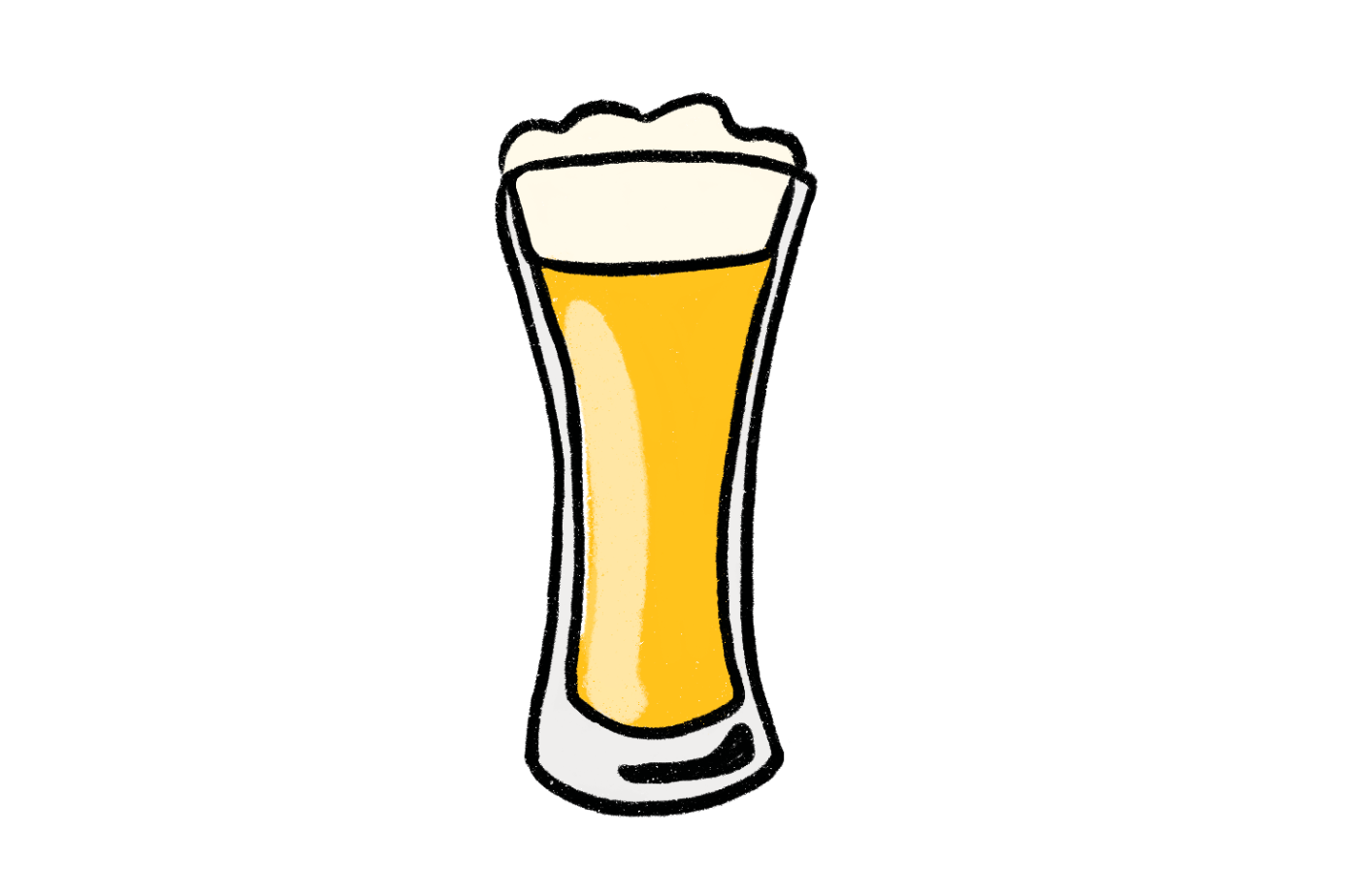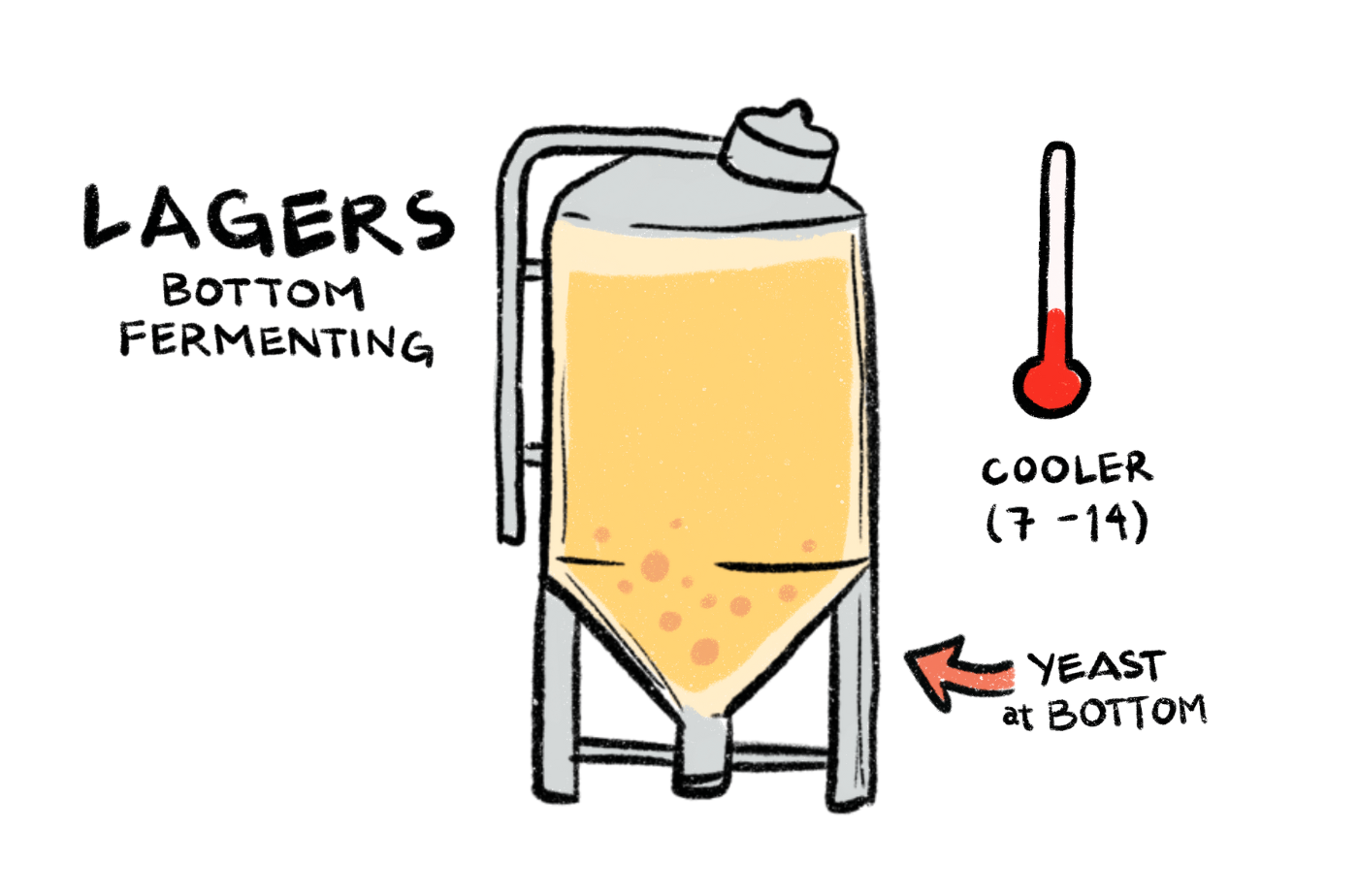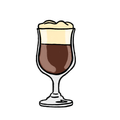

Crisp, refreshing, and sometimes enhances your best German accent
So, what is it?--red
Broadly speaking, there are just two different types of beer - Ales and Lagers. Sure, some Frankenbeers break the mould, but essentially, if it's a beer, it's either Lager or Ale! The critical difference between the two styles is about yeasts - Lager is made with Lager yeasts (Saccharomyces pastorianus), and Ale is made with Ale yeasts (Saccharomyces cerevisiae). Lager yeasts were first stumbled upon sometime in the early 17th century in Bavaria, southern Germany, so Lagers have always had a German accent. Even now, the Lager styles all have very Bavarian names, and they taste better when wearing dirndl/lederhosen (probably). Lager has long been the most popular beer style worldwide, especially in its paler form, where Lager's clean lines are famed for simple, beery good refreshment.

What does Lager taste like?--aromatic
Sure, the Lager style that everyone drinks is typically clean, light, golden-coloured and 4-6% alcohol. It's like the universal beer style! However, Lager can also come in a smorgasbord of styles, from very light and almost flavourless 'am I drinking beer or golden alcoholic water' Mexican Lager styles to toasted, black and rich, full-throttle Doppelbock. Lager is still renowned for its purity rather than complexity, with the best examples arguably the most refreshing beers on the planet.
Generally, Lager is lower in alcohol than Ale and tastes more like grain or hops than fruit, with flavours including toasted bread, caramel, biscuits and dried herbs. Darker Lager styles (which may include everything up to ridiculously weighty 14% alcohol Eisbock), then blend in more chocolate, roasted nuts and coffee flavours, too.

Main styles it's known for?--cellar
Pilsener - you could call Pilsener the grandpa of Lager, as most of the world's golden Lagers are based on a German/Bohemian-style recipe. Named after the town of Pilsen/Plzeň, in what is now the Czech Republic, Pilsener is typically a gold colour, with noticeable bitterness, moderate alcohol, a floral or grassy/herbal hoppy aroma flavours of lemon and grain with maximum freshness.
Helles - nothing hellish about this Lager style; it's all about drinkability! Created by the Bavarians as an everyday drinking beer, Helles has less herbal hop characters than a Pilsener and less bitterness, making for a golden-coloured, lightly bready beer that goes down very nicely.
Dunkel - Dunkel means dark in German, and it basically wraps up a whole category of dark Lagers. The darker colours come from barley grains that are more heavily toasted (known as a darker malt), so you pick up all sorts of toasted nuts, breadcrust and honey flavours, but still with a clean finish. Oh, and despite the colour, Dunkels are usually no more alcoholic than other Lager styles.
Bock - now we're in the heaviest, most decadent end of the Lager spectrum. Traditionally served as a winter beer, Bocks are usually dark brown to almost black in colour, sometimes very alcoholic, with almost no noticeable hoppy aromatics and instead a load of chocolatey, coffeed flavours. The wildest Bock styles are Eisbocks, which are strong Bocks made even stronger by freezing, and they weigh in at a wine-like 9-14% alcohol and can blow your mind with their warming, hearty, lusciousness.
How is Lagers made?--cork
As we touched on above, the important part of Lager brewing is the action of the yeasts. Our yeasty friend S. pastorianus is known to settle at the bottom of a fermenting beer vat, where it slowly does its work. Classically, Lagers also stick to the age-old beer-making recipe with just four ingredients - water, hops, barley and yeast. No fancy fruits with Lager! You might see rice in Japanese lagers or corn in Mexican lagers, but on the whole, Lager-making is all about simplicity. Oh, and patience, with extended maturation in the tank and bottle expected for best results. Even the hops used tend to be simple - there are four European 'noble hops' (Hallertau, Saaz, Spalt, and Tettnang) that are synonymous with great European-styled Lager.

What foods should you be pairing it with Lager?--plum
Pairing food with Lager is more straightforward than more aromatic or fruity Ales, as the more subtle flavours will work with a broader range of food flavours. That, of course, goes out the window with richer Dunkels and Bocks, but the sentiment is the same. The clean and refreshing purity of Pilsener and the pale Lager styles (like Helles) really lend themselves to white meat dishes, seafood, creamy sauces and salad, and the crossover with aromatic white wines and beer pairs is not a coincidence. Pizza and Lager is also a pair of beauty, especially with the more fuller flavoured or stronger golden Lager styles. As your Lager gets darker you want to amp up the flavour richness in your pairing too, with roast pork, sausages, wings and grilled eggplant ideal matches for a dark lager. Finally, the most luscious Bock, Doppelbock & Schwarzbier (another super-rich and heavily malted Lager) styles work wonderfully with chocolatey desserts, smoked cheeses and cakes with a biscuity base.
Recipes to pair with Lager--pizza
- Coconut, Spinach and Salmon Curry
- Smoky Texan Chicken Wings
- Satay Aubergine Skewers
- Flourless Chocolate Cake

One more thing about Lager--earth
While it might seems strange, India Pale Ale (IPA) actually came before Pale Ale! Pale Ale was basically invented as a less strong version than an IPA, especially because most drinkers were looking for something a bit more sessionable than a 6-7% alcohol brew!
About the Author:
Andrew Graham is a master winemaker and viticulturist (aka a grape guy) who fell into the wine industry as a teenager and never looked back! Voted the 23rd most trusted wine critic on the planet, Andrew judges at wine shows across the globe and runs foolishly long ultramarathons in his spare time (swiftly followed by a recuperative glass of wine or a frosty beer).
Do you know your wine personality? If your answer is no, take our quiz to find out which wines to pick up next and build your box!
Build my box





